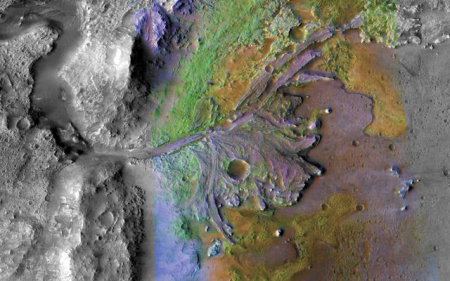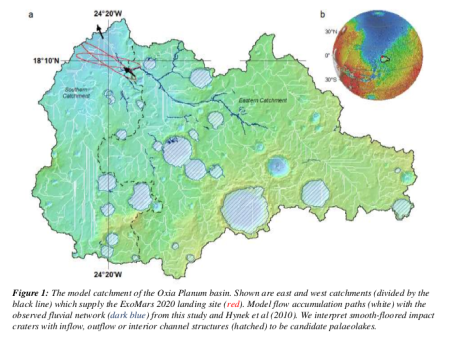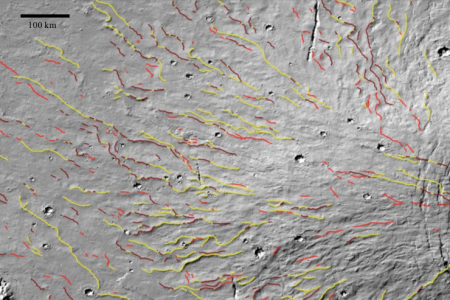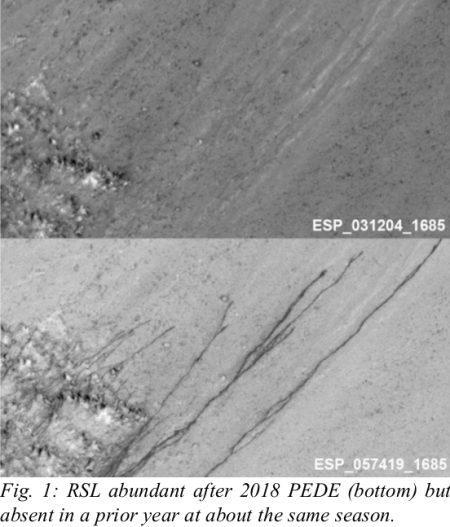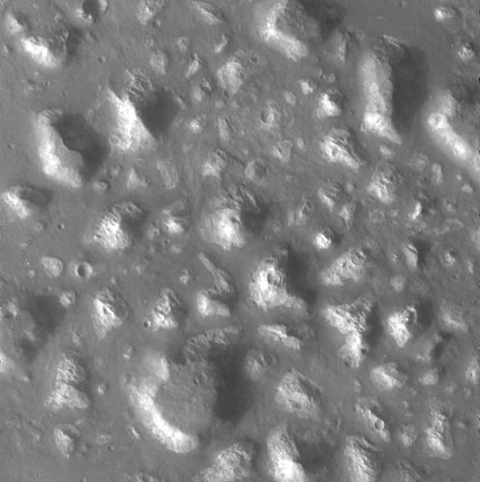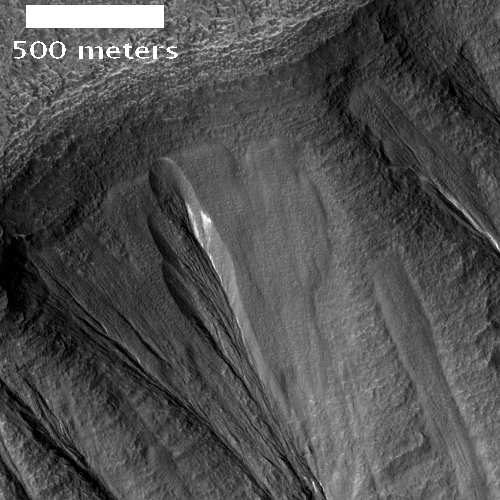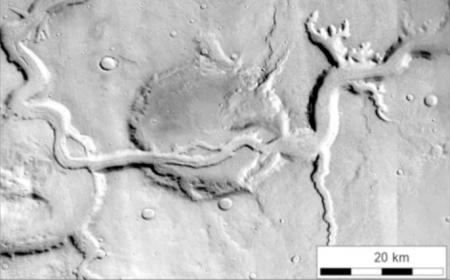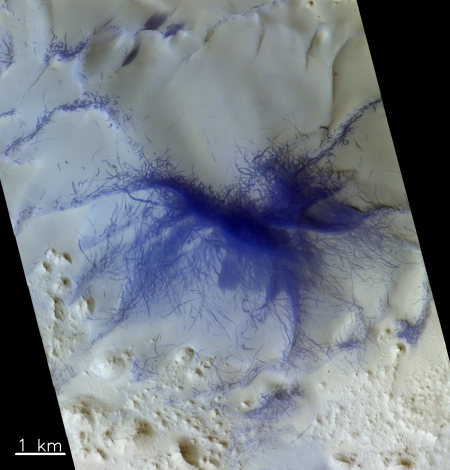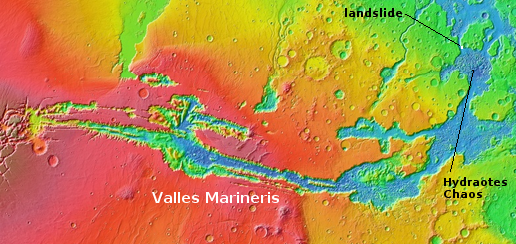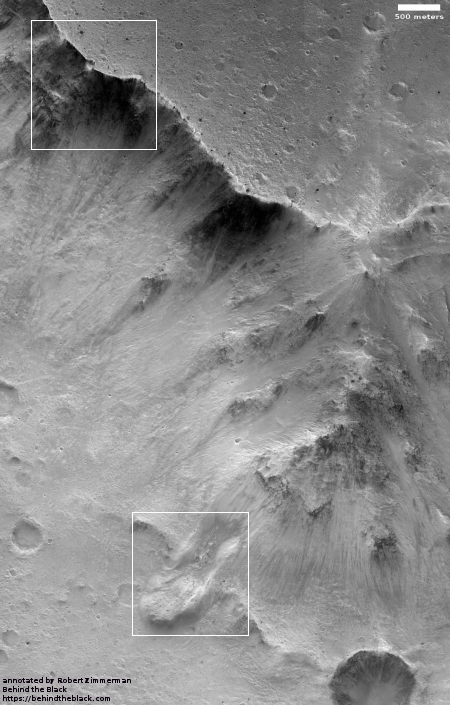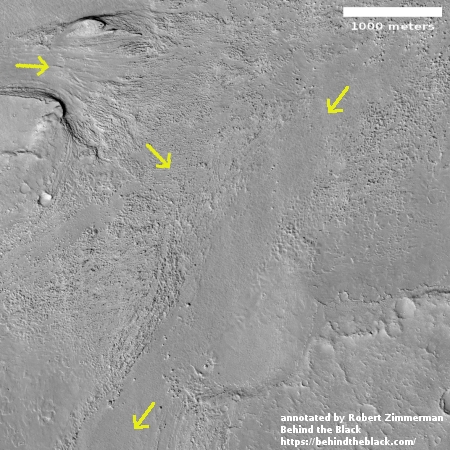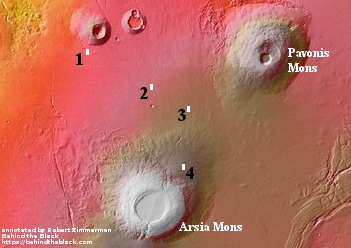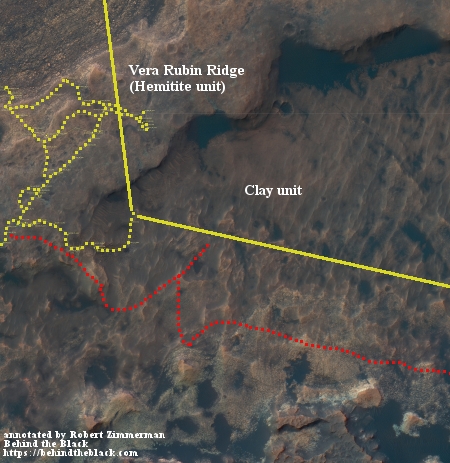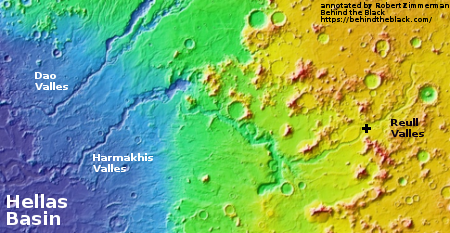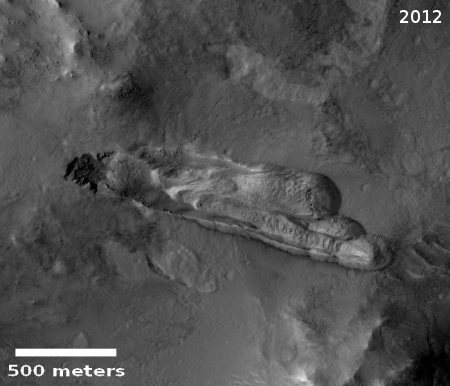The layering at the Martian poles
In the past month the science teams of both Mars Reconnaissance Orbiter (MRO) and Trace Gas Orbiter (TGO) have released images showing the strange layering found in Burroughs Crater, located near the Martian south pole.
The top image above is the MRO image, rotated and cropped to post here. To the right is a cropped and reduced section of the TGO image.
Though both images look at the inside rim of the crater, they cover sections at opposite ends of the crater. The MRO image of the crater’s east interior rim, with the lowest areas to the right, while the TGO image shows the crater’s northwest interior rim, with the lowest areas on the bottom. As noted at the TGO image site:
» Read more
In the past month the science teams of both Mars Reconnaissance Orbiter (MRO) and Trace Gas Orbiter (TGO) have released images showing the strange layering found in Burroughs Crater, located near the Martian south pole.
The top image above is the MRO image, rotated and cropped to post here. To the right is a cropped and reduced section of the TGO image.
Though both images look at the inside rim of the crater, they cover sections at opposite ends of the crater. The MRO image of the crater’s east interior rim, with the lowest areas to the right, while the TGO image shows the crater’s northwest interior rim, with the lowest areas on the bottom. As noted at the TGO image site:
» Read more



